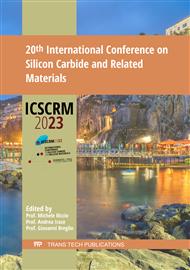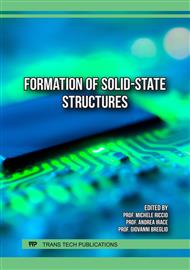p.105
p.113
p.119
p.125
p.131
p.137
p.145
p.151
p.157
Performance Improvement by Carbon-Dioxide Supercritical Fluid Treatment for 4H-SiC Vertical Double Diffusion MOSFETs
Abstract:
This study examines the impact of supercritical fluid treatment on 1200V 4H-SiC vertical double diffusion MOSFETs (VD-MOSFETs). When exposed to pure carbon dioxide or carbon dioxide mixed with nitrous oxide, there is a significant increase in the improvement ratio of drain current, which is contingent upon channel mobility but has no effect on threshold voltage. Conversely, the degradation of drain current caused by ammonia gas treatment is attributed to a reduction in channel mobility. Furthermore, the treatment with pure carbon dioxide or carbon dioxide mixed with nitrous oxide effectively passivates shallow defects, while the presence of hydrogen atoms in ammonia gas leads to an increase in shallow defects.
Info:
Periodical:
Pages:
131-135
Citation:
Online since:
August 2024
Keywords:
Permissions:
Share:
Citation:



